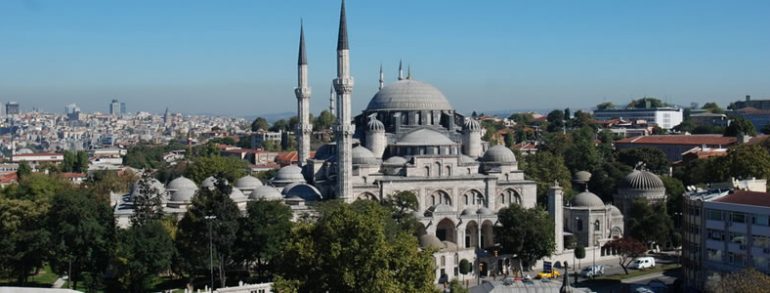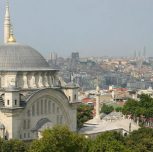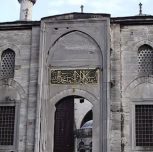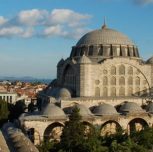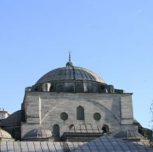Sehzade Complex (Külliye) was built for Prince Mehmet, the son of the Süleiman the Magnificient whom he liked the most and ideally thought to enthrone him. Although the construction date of the complex was never precisely known, it was written on the Sarcophagus of Prince Mehmet that “the mosque was completed in the month of Recep in 1543”. It is written in the Tezkiretü’l Bünyan, an autobiography of the architect Sinan, that the starting date of the construction of the Sehzade Complex was June, 1543. Additionally, considering the death of Prince Mehmed occured in 1543, the complex was not built for him. Upon his death the name of Şehzade was given to the complex. The complex was located in the Şehzadebaşı district of Eminonu county. The architect Sinan has called the complex the work of his apprenticeship. It consists of five major sections: a mosque, a tomb of Rüstem Paşa, a tomb (turbe) of Prince Mehmet (which was built prior to the mosque),a tabhane (hostel), and a madrasa (theological school).
Mosque
The mosque has an area of 38X38 meters with a central dome that was constructed on four big columns. The dome has a diameter of 19 meters and a depth of 53 meters.. The central dome was supported by four half-domes. The mosque has two minarets with two sherefes (minaret balcony)each with ornamentation and decoration pretty far from the architectural simplicity of that period. The nine domes of the mosque which encircle the courtyard have the same dimensions and the same height and form a symmetric unity with the fountain located in the middle of the complex. Evliya Chelebi (1611-1684), the famous 17th century Ottoman traveler and writer, stated that the dome of the fountain had been built by Sultan Murad IV and praised the architect Sinan, due to the decoration of the minarets.
Other Buildings
The starting year of the construction of the Tomb for Prince Mehmet was 1543 and it was completed in 1544. Walls of the tomb were covered with ceramics, and the windows have stained glass. Other than the tomb of Prince Mehmet, there are the sarcophagus of Cihangir, son of the the Suleiman the Magnificient who passed away in early age just like Prince Mehmet, the sarcophagus of Hümüşah, the daughter of the Suleman the Magnificient, as well as three unknown sarcophagi in the tomb.
The Madrasah, which forms the northeast wall of the complex, was constructed in 1546-1547. It consists of 20 rooms, a bath, and eyvan, a vaulted room with one side open to a court that was used a dormitory for girls after 1950s. The Tabhane, (the hostel attached to a mosque where travelers (usually dervishes and mystics) could live free for three days), was located just like the Madrasah toward the east on the outer wall of courtyard.
The building located in the southern part of the Sehzade Complex, sometimes used as the printing house of Istanbul University, was Sıbyan Mektebi, an Ottoman elementary school. The entry porch of the school does not exist today; the window structure has been metamorphosed and the fireplace was removed when it was used as a warehouse. There is another structure called Daruzziyafe (Restaurant, previously a soup kitchen in the 16th century) which consists of three sections and draws the attention of visitors.


